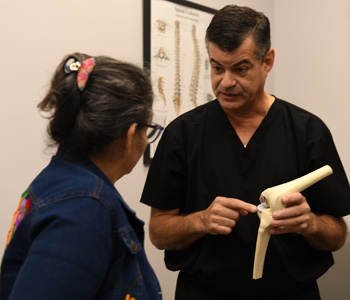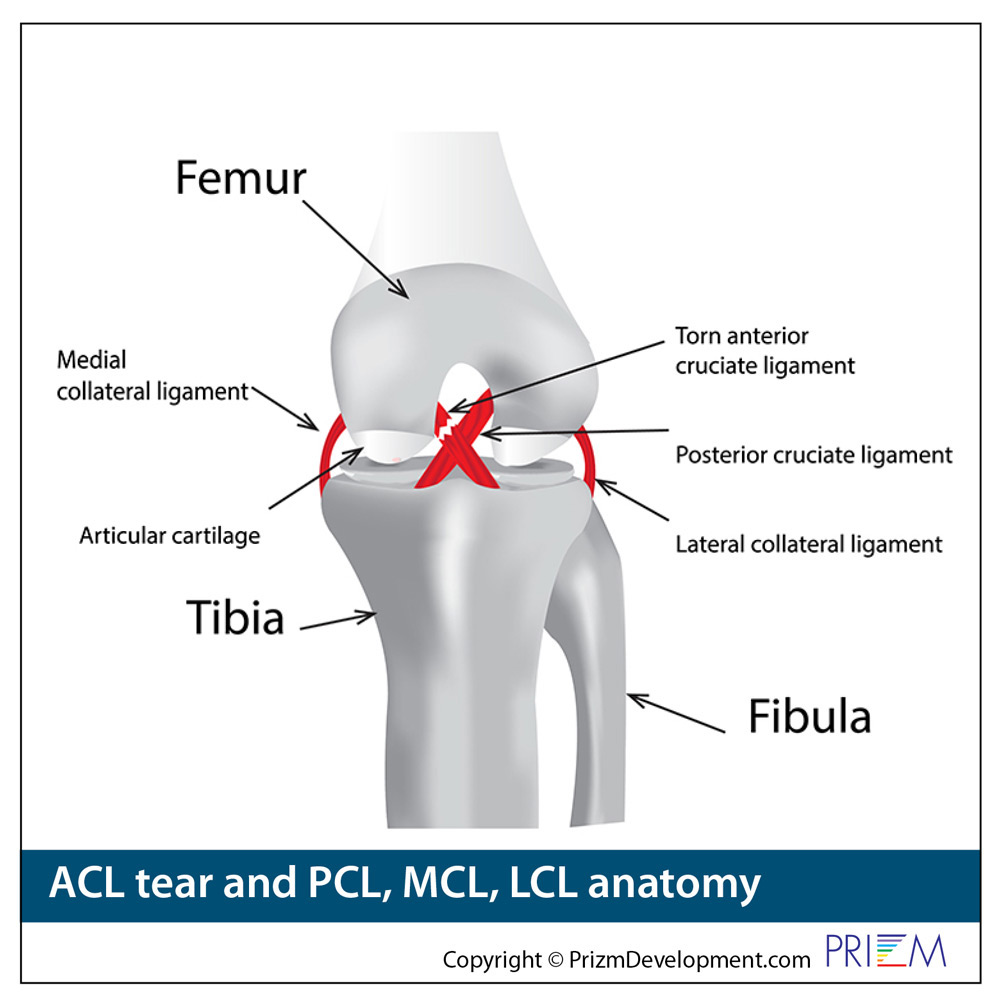ACL Tear

![]() The Anterior Cruciate Ligament (ACL) is one of the most commonly injured ligaments in the knee. Ligaments are the strong, non-elastic fibers that connect our bones together. The ACL crosses inside the knee, connecting the thighbone to the leg and provides stability to the knee joint.
The Anterior Cruciate Ligament (ACL) is one of the most commonly injured ligaments in the knee. Ligaments are the strong, non-elastic fibers that connect our bones together. The ACL crosses inside the knee, connecting the thighbone to the leg and provides stability to the knee joint.
ACL tears are most common in very active people or athletes. The ACL can tear when people abruptly slow down from running, land from a jump, or change directions rapidly. These actions are frequently performed during sports, such as football, basketball, and soccer. Although athletes are especially at risk for ACL tears, they may also occur in active workers and the general population.
When the ACL is injured, it is common to see other surrounding knee structures damaged as well. Some ACL injuries may be treated with non-surgical methods, but several factors, such as the severity of the injury and a person’s activity level, are reviewed when determing if surgery is necessary.
Symptoms
When you injure your anterior cruciate ligament, you might hear a popping sound and may feel your knee give out from under you. Other typical symptoms include:
- Pain with swelling. Within 24 hours, your knee will swell. If ignored, the swelling and pain may resolve on its own. However, if you attempt to return to sports, your knee may be unstable and you risk causing further damage to the cushioning cartilage (meniscus) of your knee.
- Loss of full range of motion
- Knee may buckle or not be able to support weight
- Tenderness along the joint line
- Discomfort while walking
If you suspect you have torn your ACL, you should see your Celebration Orthopaedics orthopedic surgeon right away. He will evaluate your knee by gathering your medical history, performing a physical examination, and viewing medical images. He will ask you about your symptoms and what happened if you were injured.
Causes
The anterior cruciate ligament can be injured in several ways:
- Changing direction rapidly
- Stopping suddenly
- Slowing down while running
- Landing from a jump incorrectly
- Direct contact or collision, such as a football tackle
- Strong twisting motion of the knee
- Hyperextension of the knee
It is common for additional injuries to result when an ACL tear occurs. Surrounding structures, such as the meniscus, cartilage, and ligaments can be injured as well. Some people may also experience bruised or broken bones.
Research has shown that female athletes have a higher incidence of ACL injury than male athletes in certain sports. It is suspected that greater angles in the female hip and leg alignment may make the knee more vulnerable to force. Additionally, female hormones can relax ligaments and make them less stable, making some women more susceptible to knee injury.

 Knee
Knee
 Knee
Knee